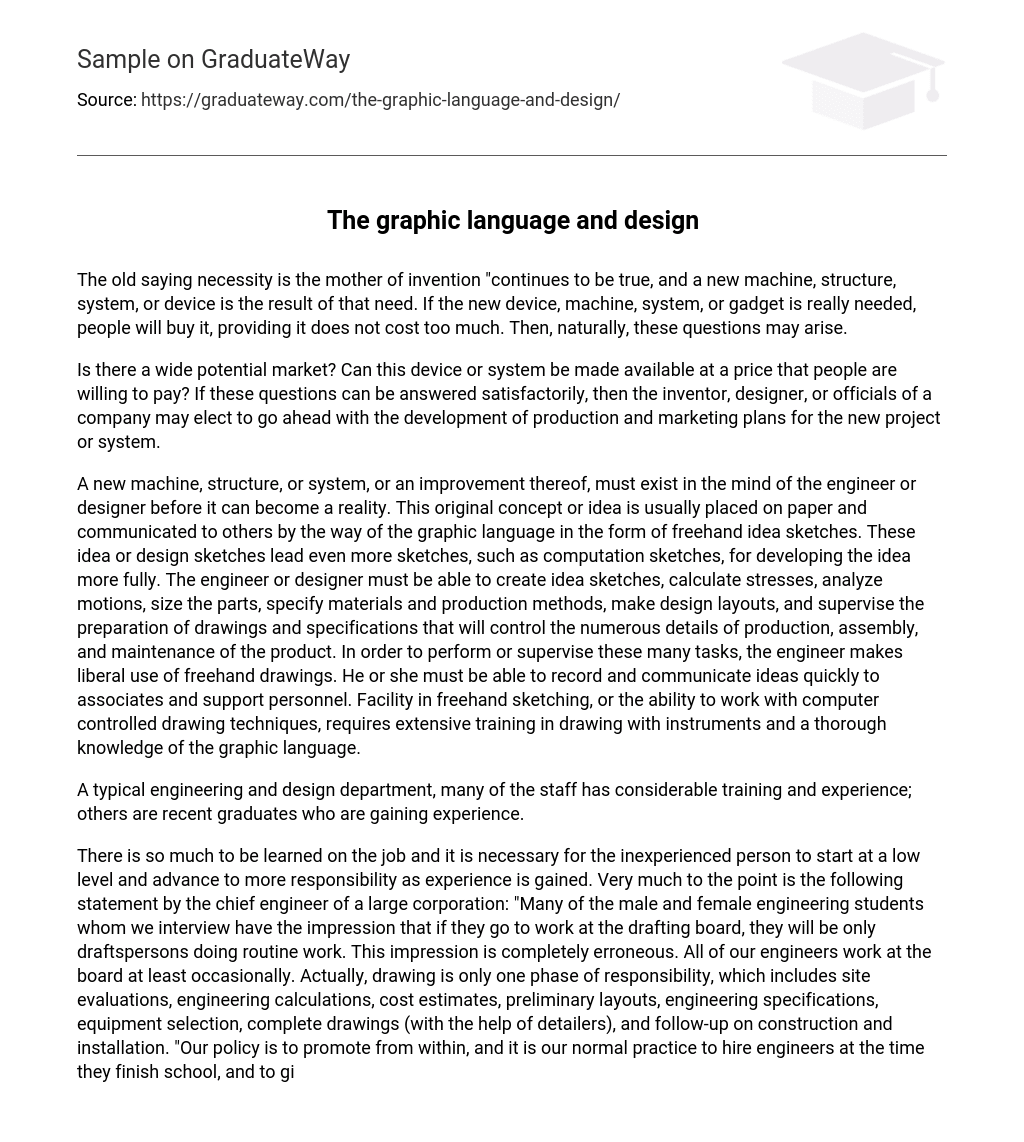The saying “necessity is the mother of invention” still holds true, as new inventions emerge from a need. When an affordable device, machine, system, or gadget is genuinely necessary, people will buy it. Consequently, the following questions naturally arise:
If there is a considerable potential market for this device or system and it can be offered at an affordable price that people would pay, then the inventor, designer, or company officials may decide to proceed with developing production and marketing plans for the new project or system.
Before a new machine, structure, or system can become a reality, it must first exist in the mind of an engineer or designer. This original concept is typically put on paper as freehand idea sketches, which serve to communicate the idea to others. These sketches lead to further development, including computation sketches, and involve tasks such as stress calculations, motion analysis, part sizing, material specification, design layout, and supervision of drawing and specification preparation. To effectively perform these tasks and communicate ideas quickly, engineers rely heavily on freehand sketching or computer-controlled drawing techniques. This proficiency requires extensive training in instrument drawing and a deep understanding of the graphic language.
A typical engineering and design department consists of a mix of highly trained and experienced staff members, as well as recent graduates who are in the process of gaining valuable experience.
Starting at a low level and gaining experience is crucial for inexperienced individuals in order to learn on the job. The chief engineer of a large corporation emphasizes this point, stating that many male and female engineering students mistakenly believe that they will only be draftspersons if they begin their careers at the drafting board. However, this misconception is completely inaccurate. All engineers in the corporation occasionally work at the drafting board. Drawing is just one aspect of their responsibilities, which also include site evaluations, engineering calculations, cost estimates, preliminary layouts, engineering specifications, equipment selection, creating complete drawings with the assistance of detailers, and overseeing construction and installation.
Our policy is to promote from within and hire engineers upon graduation. We provide them with opportunities for growth and development through diversified experiences. Newly hired engineers without experience are given productive work that matches their education and qualifications. The immediate goal is for them to gain practical engineering experience and become familiar with our equipment and processes. In design work, they are initially assigned to engineering details in various fields of study such as structural, mechanical, electrical, etc.
According to our experience, it is not advisable to give a recently graduated engineer who lacks experience a complex engineering problem, like creative design. The belief that such problems can simply be addressed by making quick sketches or layouts and having them detailed by someone else is flawed. Instead of immediately assigning a young engineer to a high level of responsibility where they might fail or make expensive mistakes, we initially assign them tasks that involve creating thorough and precise detail drawings. As the engineer demonstrates their ability to handle advanced engineering tasks, the complexity of their assignments increases.
If individuals can demonstrate their capacity to handle design responsibility, they will be assigned the role of guiding less experienced engineers in performing detailed engineering tasks. The primary cause of problems worldwide is the lack of comprehension between diverse groups. This issue arises from inadequate communication among geographically separated individuals, resulting in the emergence of numerous languages and dialects. Although communication has improved considerably, the advancement towards establishing a universal language is happening at a sluggish pace. Consequently, it remains uncertain when this objective will be accomplished.
Although a universal language in the form of words and sentences has not been established, the use of a graphic language has been prevalent since ancient times. The concept of conveying ideas through images was first developed by early cave dwellers, and evidence of this can still be found today. While these individuals relied on basic sounds and grunts for verbal communication, they turned to creating pictorial representations on various surfaces such as animal skins, stones, and cave walls when they wanted to preserve their thoughts. These initial forms of writing took the form of pictographs similar to Egyptian hieroglyphics. Over time, these forms were simplified and transformed into the abstract symbols that are currently used in our writing systems. Therefore, it can be said that even our present word languages have their roots in drawings.
A drawing is an visual depiction of an actual object, a concept, or a future construction design. Drawings can come in various formats, but the visual method of conveying ideas is a fundamental and enduring means of communication.
There are two types of drawings that Man has developed, each serving a specific purpose:
- Artistic and
- Technical.





